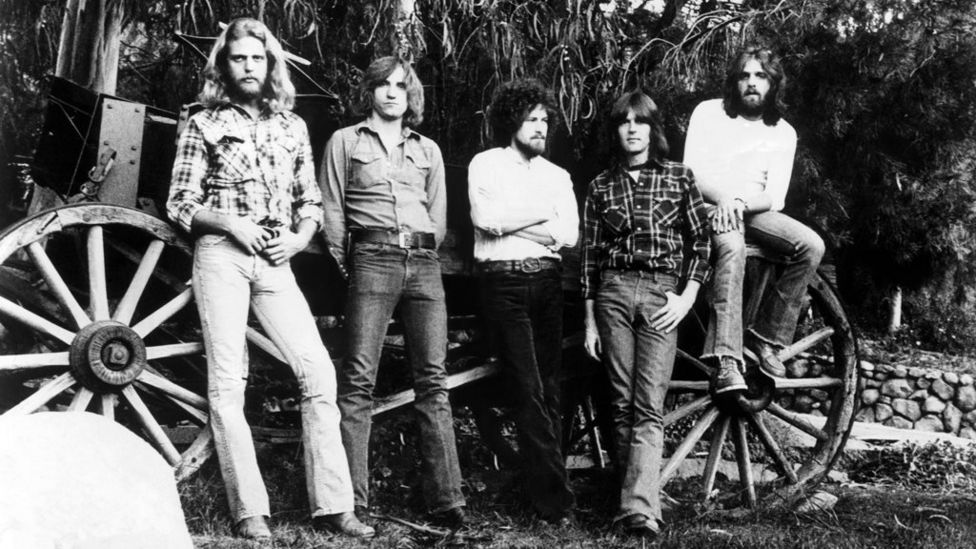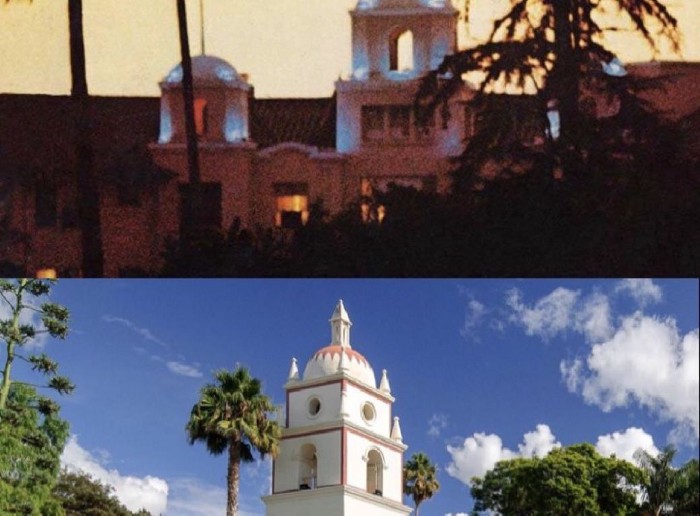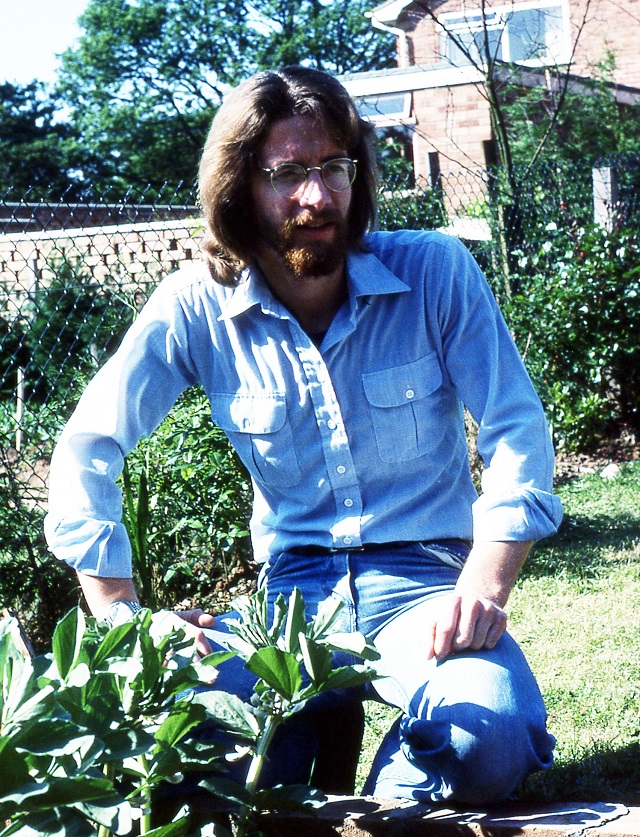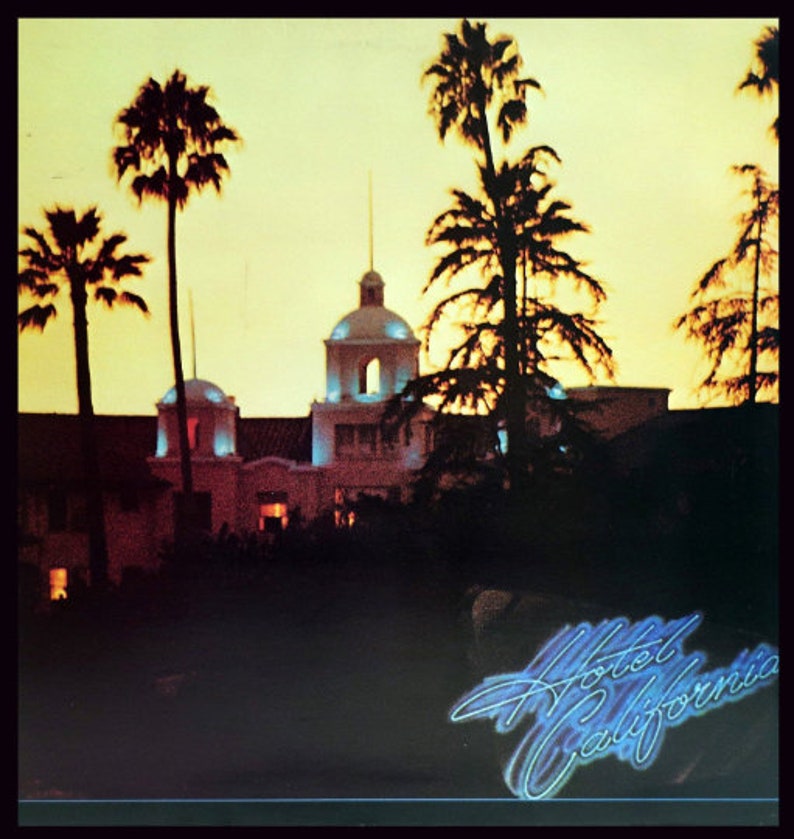Is our beloved university* the inspiration for the Eagles’ masterpiece “Hotel California”?
(* now re-branded as CI (see-eye) to avoid what some thought to be the mildly salacious acronym CSUCI (see-suck-ee) previously adopted for California State University Channel Islands.)
There can’t be many people who are not familiar with the Eagles’ opus magnum “Hotel California”, released to critical acclaim way back in 1976 (I remember it well from my DJ days!) and subsequently recorded as an even better (I think) flamenco-inspired acoustic version for the Hell Freezes Over album. The title track remains their most famous recording, a long and intricate rock ballad whose dueling guitar coda has been named one of the best guitar solos of all time. It is perhaps the most perfectly crafted song in the history of rock music, recorded long before today’s undergraduates were born. Every second of its six and a half minutes is constructed to bring the best out of every instrument and voice, and it shows. The band took eight months to record the song – they were constantly working on it and tweaking it. On the Hell Freezes Over album, the Eagles used eight guitars to perform the song. In the original studio mix, only five were used. This should give you some measure of the caliber of this song. Savor the days when music was music!

Don Felder came up with almost all of the music for “Hotel California,” including that iconic guitar opening, while Don Henley with some help from Glenn Frey crafted the lyrics.
Lyrics
The lyrics are bold, poetically vivid, evocative and ambiguous. The metaphorical character of the story related in the lyrics has inspired a number of conjectural interpretations by listeners. One is that the Hotel California was the Camarillo State Mental Hospital, a state-run psychiatric hospital which at completion was the largest mental hospital in the world and housed more than 7,000 patients at its peak in 1957. Its sixty-odd year history came to a close in 1997, and it has since been redeveloped into our very own California State University Channel Islands. (Some joke that the mental patients were given Ph.D.’s, becoming the university’s first cohort of crazy professors. Perhaps some students will attest to this!)
The song lyrics could be about the story of someone becoming a patient in the Camarillo mental hospital, although doubtless they also has wider connotations. The lyrics might seem to fit what a mentally disturbed person would experience upon incarceration in a long-term care facility, with that person’s hallucinations juxtaposed against moments of startling clarity as he realizes where he is. People displaying the pathology in the lyrics were removed from society and often hospitalized against their will. They became prisoners in a kind of purgatory. Patients wore tan jumpsuits to distinguish them from the doctors and to help capture those that attempted escape. Rowdy inmates were routinely kept under control with powerful drugs. Those that were still uncontrollable were subjected to brutal treatments such as electroshock therapy. Another routine treatment was to immerse the patients in hot water, bring them out, and then wrap them in ice-cold towels.
Last thing I remember
I was running for the door
I had to find the passage back
To the place I was before
“Relax”, said the night man
“We are programmed to receive
You can check out any time you like
But you can never leave.
The Meaning?
Although Henley and Frey denied that the hospital/future university was the inspiration in the 2013 documentary “History of the Eagles”, it’s possible that the site did inspire them but concerns over retaining the “Hotel California” trademark led their lawyers to recommend to band members that they deny it. (Indeed they sued a Mexican hotel for using the name, settling for an undisclosed amount). In an interview with Rolling Stone, Henley said that the song was meant to be “more of a symbolic piece about America in general”, and added: “Lyrically, the song deals with traditional or classical themes of conflict: darkness and light, good and evil, youth and age, the spiritual versus the secular. I guess you could say it’s a song about loss of innocence”. The song has been described as being “all about American decadence and burnout, too much money, corruption, drugs and arrogance; too little humility and heart.” It has been interpreted as an allegory about hedonism, self-destruction, and greed in the music industry of the late 1970s. Henley called it “our interpretation of the high life in Los Angeles”, and said: “It’s basically a song about the dark underbelly of the American dream and about excess in America …” In the “History of the Eagles”, Henley reiterated “On just about every album we made, there was some kind of commentary on the music business, and on American culture in general. The hotel itself could be taken as a metaphor not only for the myth-making of Southern California but for the myth-making that is the American Dream, because there is a fine line between the American Dream and the American nightmare.
Be that as it may, if you look at the cover of the Hotel California album and a photo of the Bell Tower at the University there is a resemblance – although the pictures for the album artwork were actually taken at the Beverly Hills Hotel in Los Angeles. They both share the Mission Revival architectural style.

Conclusion
Jazz legend Charlie Parker stayed at the Camarillo State Hospital for about six months after a nervous breakdown in 1947 and soon after recorded his hit “Relaxin’ at Camarillo”. Steve Mann, considered by many to be the father of wearable computing, spent some time there rehabilitating from drug addiction in the 1960s . The Eagles themselves were no strangers to drugs, including cocaine, and while it is likely that one or more of them may have been in rehab at some time or other, there is no hard evidence. Their turbulent lifestyle eventually lead to break-up and recriminations, largely as a result of the pressures to make another Hotel California.
So is CI the inspiration for Hotel California? On balance, the evidence suggests probably not. But it’s a nice hypothesis, and CI probably benefits from the association. There’s certainly an interest in music here, and the Performing Arts department runs a popular and illuminating course called “The History of Rock”.
What do you think? Do you think there’s a connection between CI (or rather, the mental hospital) and Hotel California? Do you have any more information? Please let us know in the comments, or just write a general comment on the page. Many thanks for reading! (Don’t forget the links! 😆).
Update: There’s also a hotel in Palm Springs using the name – no word of it being sued!😎
Postscript



It think CSUCI was Hotel California. The campus is truly a gem from unique architectural statement to special events, liaison, worldwide collaboration and rock stars!
They have rock stars there too? 😎
“Hotel California” was co-written by Don Felder (melody), Glen Frey & Don Henley (lyrics). One several occasions members of the Eagles have nixed the association with the former State Hospital which is now the site of CSUCI. Here’s one quote: In the 2013 documentary History of the Eagles, Henley said that the song was about “a journey from innocence to experience … that’s all”.
Interestingly when I visited the CI site, after it had been abandoned as a hospital but not yet populated with students, the clock faces in Bell Tower had “Hotel California” prominently written on them in large black letters. Those references we evidently quickly removed by the new management!
Another somewhat related bit of trivia is the location of the plaque that memorialized the transfer of the campus from the State Hospital System to the CSU System. According to Randall Mullenix, who was the Applied Physics instrument technician when the campus first opened, the dedication plaque … attached to a sizable boulder … mysteriously vanished from the center of campus and was relocated behind Aliso Hall. Another attempt by the University’s first (technically second) president Richard Rush to disassociate the University from its “Mental Hospital” origins.
That inscription on the clock face of the Bell Tower was very interesting! Pity we don’t have a picture of it …
I think there could be something to it, given that CSUCI was formerly the State Mental Hospital treating addicts/depression/mental issues and the Eagles were into drugs in a big way then.
Who is that guy in the last pic? It looks a lot like you! 😂
Yes it does!😂
Hope this works Geoff
Well written! Waiting for the next one.
Haha … I haven’t quite got the hang of it yet. Can’t make the comments show up on the page ….
Blog is very good, and hopefully can add other articles such as movies etc
Thanks! If I can get the time. Are you familiar with this song? Did you click on any of the links? who is the guy at the bottom of the blog?